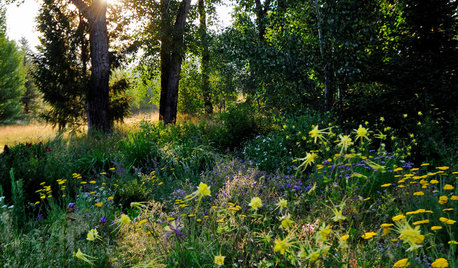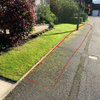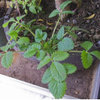I have a potentially serious Japanese knotweed problem spread over almost 3/4 acre. It involves thousands of these invasive weeds. However, it's a bit different from most of the situations I have been able to research, and am hoping that someone has experience with a similar situation.
I've been working on my future retirement property every weekend for the last couple years; it's 3 hours away from my current house. House construction was last winter and rough landscaping this spring. On May 15 I finished spreading loam and grass seed over 3/4 of an acre. The lawn is coming up great, and so is something else. It turns out that the last 16 yards of loam contained a LOT of someone's knotweed root clippings. They are generally 1 to 4 inches in length, and typically 1/4 - 3/8 inch in diameter. They are in the top 3 inches of the soil and are sending out 1 to 3 small stems and leaves each. On close inspection I don't think these pieces have sent out many rhizomes yet. They are distributed randomly throughout the lawn, , and every week there is a stem coming up about every 5 square feet or so. I have dug up many hundreds of these so far, but there are more on the way, and the grass is almost ready for its first mowing.
Almost everything I have read about so far has dealt with attempts to eradicate mature and established knotweed growth, typically in a patch, and not with newly sprouting sprigs from widely distributed root pieces interspersed in a large lawn. Those treatments also tend to advise on eradication of large plants around the time that they flower, and typically involve glyphosate application at that time.
So, what should I do in my situation? I could wait it out til August and "hope" %^) that the knotweed grows really tall and flowers so that I can hit it with a herbicide....but this seems extremely risky, especially given the sheer number of pieces in the soil and fact that it's been detected early. Plus, the new lawn needs to be mowed, so leaving it alone doesn't seem like a very practical option.
Oh, and to the person who left their clippings in my loam... not a particularly wise thing to do.
Thanks - andy











noinwi
jean001
Related Professionals
Surprise Landscape Architects & Landscape Designers · Benbrook Landscape Architects & Landscape Designers · Lowell Landscape Architects & Landscape Designers · Arden-Arcade Landscape Contractors · Bellefontaine Neighbors Landscape Contractors · Englewood Landscape Contractors · Fairhope Landscape Contractors · Gresham Landscape Contractors · Lakeville Landscape Contractors · Lees Summit Landscape Contractors · Tigard Landscape Contractors · Wells Landscape Contractors · Woodburn Landscape Contractors · Northlake Landscape Contractors · Baileys Crossroads Landscape ContractorsKimmsr
green17
petchie
awl51Original Author
HU-546663088